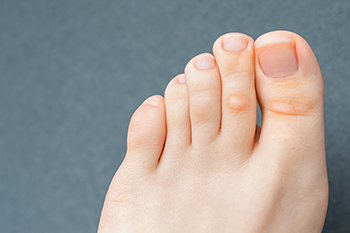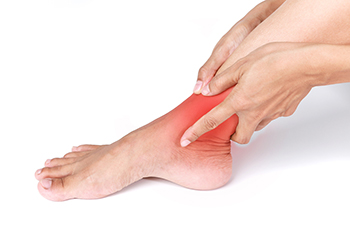 When a patient talks about having fallen arches, they are referring to the condition that is known as flat feet. This is noticeable while standing on the floor, and both feet lie completely flat. There are several reasons why this ailment may occur, including genetics, an injury to the foot or ankle, or medical conditions that can include arthritis. Additionally, obesity, diabetes, and the aging process may cause flat feet. A common symptom many patients notice is foot pain. This can be a result of strained ligaments and muscles this condition may cause. Relief may be found when supportive shoes are worn, and it may help to practice specific exercises. If you have flat feet, it is suggested that you speak with a podiatrist who can guide you toward relief processes.
When a patient talks about having fallen arches, they are referring to the condition that is known as flat feet. This is noticeable while standing on the floor, and both feet lie completely flat. There are several reasons why this ailment may occur, including genetics, an injury to the foot or ankle, or medical conditions that can include arthritis. Additionally, obesity, diabetes, and the aging process may cause flat feet. A common symptom many patients notice is foot pain. This can be a result of strained ligaments and muscles this condition may cause. Relief may be found when supportive shoes are worn, and it may help to practice specific exercises. If you have flat feet, it is suggested that you speak with a podiatrist who can guide you toward relief processes.
Flatfoot is a condition many people suffer from. If you have flat feet, contact one of our podiatrists from Advanced Foot & Ankle Medical Center . Our doctors will treat your foot and ankle needs.
What Are Flat Feet?
Flatfoot is a condition in which the arch of the foot is depressed and the sole of the foot is almost completely in contact with the ground. About 20-30% of the population generally has flat feet because their arches never formed during growth.
Conditions & Problems:
Having flat feet makes it difficult to run or walk because of the stress placed on the ankles.
Alignment – The general alignment of your legs can be disrupted, because the ankles move inward which can cause major discomfort.
Knees – If you have complications with your knees, flat feet can be a contributor to arthritis in that area.
Symptoms
- Pain around the heel or arch area
- Trouble standing on the tip toe
- Swelling around the inside of the ankle
- Flat look to one or both feet
- Having your shoes feel uneven when worn
Treatment
If you are experiencing pain and stress on the foot you may weaken the posterior tibial tendon, which runs around the inside of the ankle.
If you have any questions please feel free to contact our office located in Thousand Oaks, CA . We offer the newest diagnostic and treatment technologies for all your foot and ankle needs.





